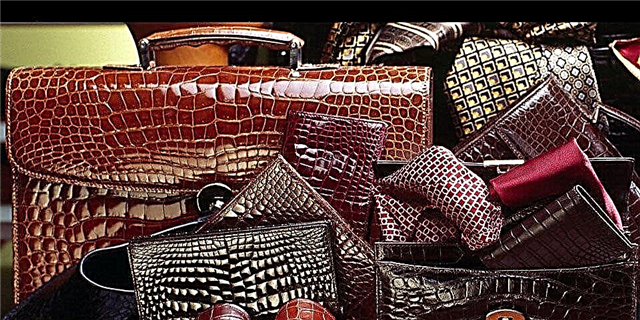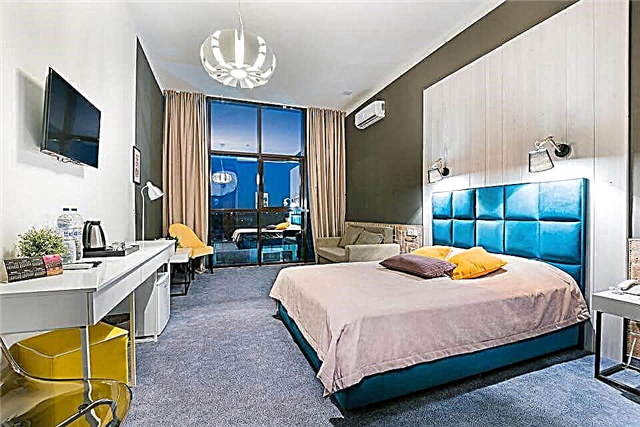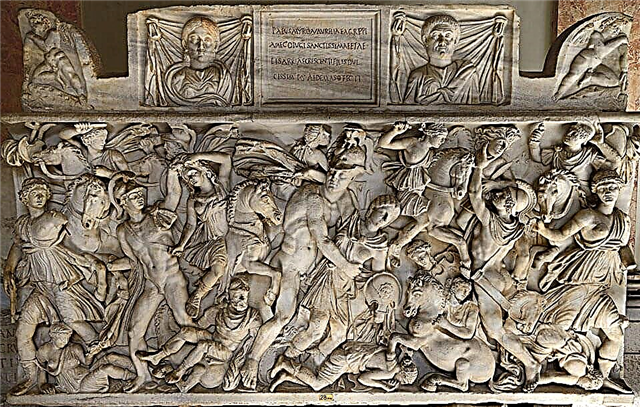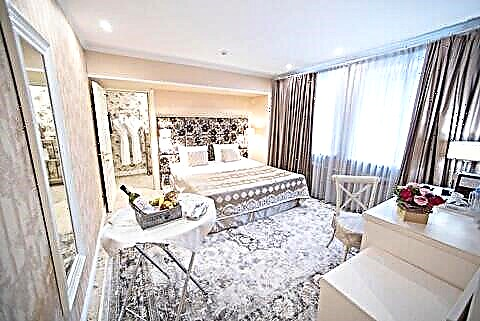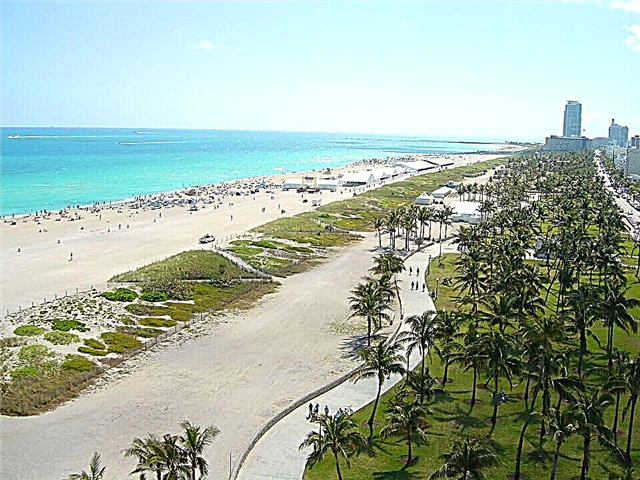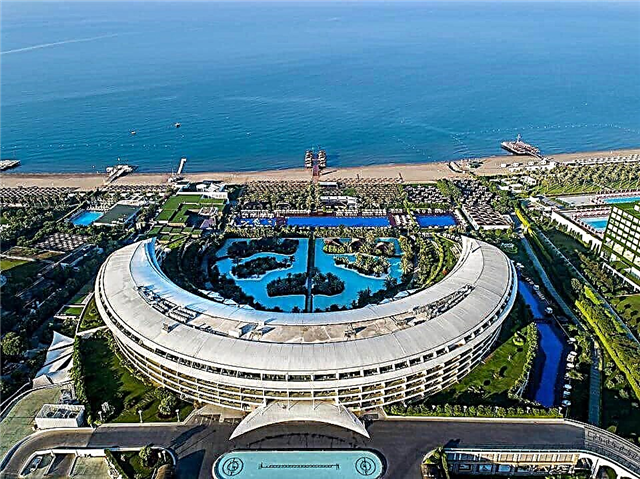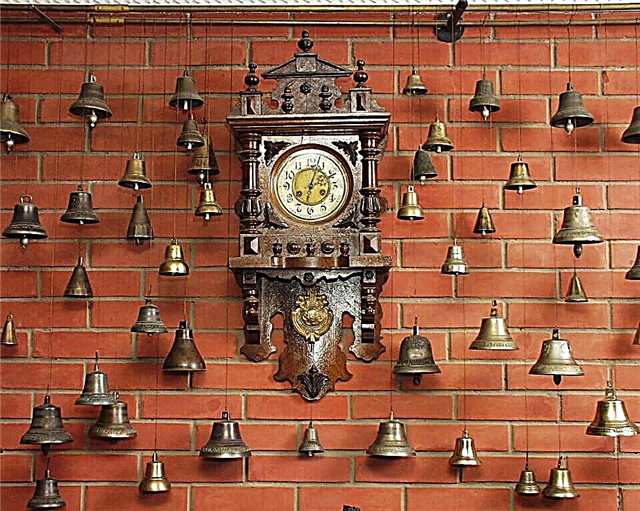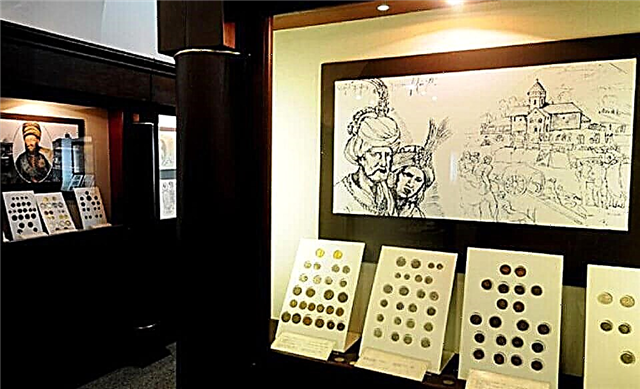In recent years, tours to Georgia have become more and more popular. The mild climate, beautiful nature, delicious cuisine, an abundance of attractions - all this attracts guests from other countries here. And, of course, one cannot fail to visit the capital of the country - Tbilisi. When planning your acquaintance with this city, remember - you need to try to see as much as possible. This opportunity is provided by the museums of Tbilisi, which will acquaint you with the past and present of Georgia.
National Museum of Georgia named after Simona Janashia

It was based on the collections of the Caucasian Museum, which was housed in this building back in 1825. In 1921, in order to save historical values from the Bolsheviks, they were taken to Europe. When the Second World War died down, they returned back to Tbilisi. In 1991, the government changed in Georgia, the building was damaged. After a while, the building also had to survive a fire. So this cultural institution has a very complicated history.
Also in the early 2000s, a reorganization took place, the purpose of which was to optimize the work of a number of museums. In 2004, the network was founded: it included 13 cultural institutions, including the one in question
There is something to see in the National Museum. Its main treasure is gold objects. These are coins, jewelry and minting, which date back to the 2nd century BC. Old weapons and dishes are also displayed here.
Guests can see the remains of the oldest member of the human race, who lived about 2 million years ago. Stones with Urartian inscriptions are also of great interest. In general, it is here that you can get the most complete picture of the ancient culture of the Caucasus. Address: Shota Rustaveli Avenue 3. Working hours: Tuesday - Sunday from 10 am to 6 pm, closed on Mondays.
Museum of Soviet Occupation

A very interesting cultural institution and, moreover, very tolerant. Here you will not find accusations against Russia - only a vivid account of the crimes of the communists. But it is interesting that during the period of the most brutal repressions in the USSR, the Georgian Stalin was in power. Meanwhile, his house in Gori remains a place of pilgrimage for tourists. This cultural center is located in the building that is occupied by the Georgian National Museum, only the entrance is separate. It was opened in 2006, then immediately closed for repairs, and again it opened its doors only in 2011.
Here you can get a lot of interesting information about how the independence of Georgia was proclaimed in 1921, and how the country's national liberation forces fought against the Bolshevik regime. One of the exhibits especially clearly demonstrates how acute this struggle was, the wall of the carriage, riddled with bullets: by order of the communists, participants in the 1924 uprising were shot. You can see the desk of the KGB investigator (and even sit at it), look at thematic photographs, get acquainted with documents from the KGB archives, there are also interactive exhibitions.
Address: Shota Rustaveli Avenue 3. Working hours: Tuesday-Sunday from 10 am to 6 pm, closed on Mondays.
Museum of Georgian Emigration

It is located in the building of the State University, as the exhibits are of truly scientific value. Here are collected the archives of those outstanding sons and daughters of the Georgian people who, for one reason or another, were forced to leave their homeland. These are handwritten and printed documents, photographs. All this allows you to get the most reliable information about the life and work of emigrants. Many names for tourists from Russia will be a revelation, but after listening to the story about these people, you will not forget them.
Ekvtime Takaishvili moved to France with the goal of preserving the national heritage. 39 boxes, which contained the treasury and cultural objects, found a safe haven in Paris. The collection was returned to its homeland only at the end of the Second World War. Equtime, on his return to Georgia, died under house arrest. Noah Jordania, Grigol Robakidze and others left their mark on history. The photographs kept in this scientific and cultural center are truly unique.
Address: Chavchavadze Ave. 1. Opening hours Tuesday-Sunday from 11 am to 5 pm, Monday - day off.
National Center for Manuscripts

A very interesting center, which was founded back in 1958. The most valuable written documents are kept here today. These are the manuscripts themselves, as well as the archives of famous persons, the rarest printed books, microfilms or copies of those handwritten works in the Georgian language that now remain abroad.
There are currently more than 10 thousand books here, and more than 40 thousand documents. In addition, the center presents numerous works performed in European languages, as well as in the languages of peoples living in the countries of the East. You can not only come here on an excursion, but also get invaluable help in writing scientific papers.
Address: st. Aleksidze 1/3. Opening hours: Tuesday - Saturday from 11 am to 5 pm, Monday is traditionally a day off.
Ethnographic open-air museum

A very interesting cultural center, which you can devote a whole day to exploring. It is located in Vake Park near Turtle Lake. It was founded by the ethnographer Georgy Chitaia. His dream was to show different types of dwellings in a relatively small area. Having visited here, you will vividly imagine how representatives of various strata of society lived in different centuries.
There are 70 buildings here. These are the homes of the poor and the rich, the inhabitants of the mountains and plains, hunters, herders, farmers. There are also farm buildings, tools, household utensils. The impression is made by mills and forges, wine cellars, traditional carts, handmade carpets and much more. Here you can not only walk and take beautiful photos. It is allowed to go inside the dwellings to look at furniture, clothes, dishes, looms and other exhibits.
In the Kakheti house, bread is baked and guests are treated on weekends. They also offer delicious cheese. Often, master classes are held in the complex, during which you can master the basics of ancient Georgian crafts. It is best to come here during the warm season. It should be noted that the ethnographic complex is located at a certain distance from the center of Tbilisi, so you need to take time to explore it.
Address, Kustba heap 1. Opening hours: Tuesday - Sunday from 10 am to 8 pm, closed on Mondays.
Museum of History and Ethnography of Georgian Jews named after Baazov

Georgians believe that their friendship with Jews has been going on for more than one millennium. Moreover, it is not overshadowed by any anti-Semitism. And, of course, there is also a museum dedicated to Georgian Jews in this Caucasian country. After all, a community of representatives of the most ancient people has existed in Georgia since the 6th century BC. This cultural center is located in the building of an old synagogue, closed at the beginning of the last century. It was named after David Baazov, who did a lot to form the community. Here you can see documents testifying to the friendship of the two peoples, old photographs, memorabilia.
Address: st. Anton Katalikosi 3. Working hours: Monday - Friday from 11 am to 6 pm, closed on Saturday and Sunday.
Money museum

Its other name is "Museum of Coins". It was opened in 2001, for a long time it was in the capital of Georgia, and recently it was moved from Tbilisi to the city of Kvareli. It is of interest both for numismatists and for all history buffs. It houses a collection of exhibits, the oldest of which date back to the 6th century BC. There are coins that were in use under Alexander the Great, you can see the money of Ancient Rome, Byzantium, Venice, and the countries of the East. Today's coins are also presented. Including - the currency of different countries of the world. During the tour, you will learn many interesting facts.
Address: Kvareli, st.Shota Rustaveli 10. Working hours: Monday - Friday from 9 to 18 hours, Saturday and Sunday - days off.
Tbilisi History Museum Karvasla

You can get an idea of the country's cultural heritage at this center. It bears the name of the outstanding son of the Georgian people, the poet Ioseb Grishashvili. It was opened in 1910. Another name that stuck, namely "Karvasla", means "Caravanserai". It was he who was previously in this ancient building. There are about 50 thousand interesting exhibits, dating back to the 4th century BC. You can see things used by ancient people, their weapons and jewelry, dishes and household utensils. Following the halls, you will follow the further path of development of the Georgian people.
Address: st. Seoni, 8. Opening hours: Tuesday-Sunday from 10 to 18 hours.
Silk Museum

The museum will make a great impression on children and adults. Back in 1887, by order of the authorities, N. Shavrov founded a silk-breeding station in Tiflis, which he subsequently headed for 2 decades. Of interest is the building itself, where this station was located. Its architect was A. Shimkevich, who graduated from the Academy of Arts in St. Petersburg. The building looks very unusual and stylish. Today, samples of cocoons are presented here, and guests can get an idea of all the stages of the process - how silkworm caterpillars are grown, how silk threads are born, how amazing fabrics are made from them.
You will see the silkworms in alcohol. You will learn that truly high-quality silk can be obtained only by feeding the caterpillars with mulberry leaves. Otherwise, the threads will turn out to be coarse, and the fabric from them will come out of poor quality. There is also a scientific library, tools related to silk production, thematic photographs, and magnificent silk products. For several months of the year, during the excursions, you can feed the caterpillars with mulberry leaves. Children will especially enjoy this process.
Address: st. G. Tsabadze 6. Working hours: Tuesday-Sunday from 11 am to 5 pm, closed on Mondays.
Museum of Theater, Music, Film and Choreography

It is located in one of the most beautiful buildings in the country - the Palace of Arts, designed by the famous German architect Paul Stern. Today, more than 200 thousand various exhibits are kept here. During the excursion, you will learn how theater and music, cinema and choreography developed in Georgia. Thousands of photographs are collected here - scenes from performances, moments of rehearsals, photographs from a tour, tape recordings, Georgian films, costumes of artists, posters of performances, manuscripts and private archives are presented.
Many outstanding artists have donated their awards here. A marble mask from the times of Antiquity is also kept here. This is the oldest exhibit and is of great interest. The collection is constantly updated. After all, art does not stand still. Many exhibits were donated here by the residents of Georgia.
Address: st. Kargareteli 6. Working hours: Tuesday - Saturday from 10 to 17 hours, Sunday and Monday - days off.
Automobile Museum

Its creator is a real enthusiast, businessman Gia Mamulashvili. He began to collect his collection of retro cars several years ago. First there was the old "Moskvich", which had to be restored for a long time, then other exhibits began to be added to it: "Volga", "Zhiguli", "Cossacks". For those who lived during the years of the USSR, one of their appearance will cause light nostalgia. Interestingly, all of them are superbly restored (this process takes up to 9 months) and are on the move. Some funny story is connected with the acquisition of almost every exhibit, which will be told to you during the excursion.
For example, one of the cars was simply dug out of the ground. The cheerful colors of the cars were familiar to the Soviet era. It is now people who are trying to buy vehicles of strict shades. There are also especially interesting cars here - for example, an armored car, which was used to carry General Secretary Konstantin Ustinovich Chernenko. Gia dreams of putting in her museum the Mercedes in which Eduard Shevardnadze was sitting during the attempt on his life. Beautiful photos can be taken next to vintage convertibles.
Address: Varketili, st. Cairo 79. Opening hours: every day from 10 to 20 hours.
Museum of the Underground Printing House

It will be interesting to visit for those who are loyal to Stalin and the communists. When Lenin was in exile, he continued to spread revolutionary ideas. And he also suggested that his Georgian followers build an underground printing house to print leaflets. It was built in a very difficult way. They bought the place, built a house, equipped a spacious basement, in which they put a printing press, and the descent into the basement was carried out through a well.
If there was a danger, the mistress of the house called - and the work in the basement stopped, when the threat was over - the conditional bell rang again, and the workers began to print leaflets again. In 1906, the printing house was declassified, the house was destroyed. But Joseph Vissarionovich kept fond memories of him. By order of Stalin in the 30s, the house was rebuilt again, and a museum was opened here. You will see not only many interesting exhibits, but you will also be able to go down to the basement where the machine is located. True, pretty rusted.
Address: st. Kaspi 7, there is no specific work schedule, excursions are conducted by representatives of the Communist Party.
Museum of Arts. Sh. Amiranashvili

It is located in a historic building next to Freedom Square. Previously, there was a theological seminary where young Joseph Dzhugashvili (Stalin) studied. The museum is named after Shalva Amiranashvili, who headed it for more than 3 decades and did a lot to replenish the fund. In total, the exposition includes about 140 thousand exhibits.
Here you can see the old coinage of the Middle Ages, admire the golden cross that belonged to the same fateful queen Tamara, see the ancient icon of the country - the face of the Savior Not Made by Hands. There are also paintings and other works of art made by masters from the countries of the East and West. The collection of paintings by the great Georgian artist Niko Pirosmani is also of great interest.
Address: st. Gudiashvili 1. Working hours: Tuesday - Sunday from 11 am to 4 pm, Monday - day off.
National Art Gallery of Georgia

Another name for her is "Blue Gallery". The building where it is located was built at the end of the 19th century, while the gallery itself was opened in 1917. The great merit in this is the artist Dmitry Shevardnadze. After the restoration work that took place here relatively recently, the gallery got his name. Today there are collected about 3 tens of thousands of paintings, sculptures, works of arts and crafts and photographs. Most of the work belongs to artists of the 20th century. Two halls are occupied by permanent exhibitions, the rest regularly host new exhibitions. Here you can listen to guided tours in several languages, including, of course, in Russian.
Address: Rustaveli avenue 11. Working hours: Tuesday-Sunday from 10 to 18 hours, Monday - day off.
Theater Museum named after Shota Rustaveli
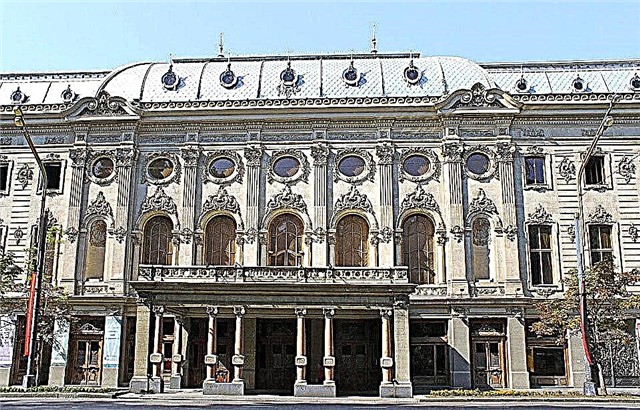
The name of the outstanding Georgian poet, who lived in the 12th century, has been assigned to many cultural sites in the country. The Rustaveli Theater Museum was opened back in 1932. During the excursion, you can get acquainted with the history of the development of the creative team. Personal belongings and costumes of actors, numerous photographs, manuscripts, sketches of scenery, posters, programs are kept here. Of course, publications are also collected here - books and newspapers, which tell about the theater, about directors and artists. Having visited here, you will receive very interesting information, because Georgia is the birthplace of many outstanding actors.
Address: Rustaveli Ave. 17. Working hours: Tuesday-Saturday from 11 to 18 hours, Sunday and Monday - days off.
Museum of Opera and Ballet Theater. Zakaria Paliashvili

The Opera House in Tbilisi appeared in the middle of the 19th century. Outwardly, it resembles a Moorish palace.Here you can see both classical works, such as "The Nutcracker" or "Sleeping Beauty", as well as works by Georgian authors. For example, the play "Abesalom and Eteri", which is based on an ancient legend, opens each theatrical season. Next to the theater building, in the park, is the grave of Zakaria Paliashvili. There is also a House-Museum of this great composer in Tbilisi. It opened in 1959. The atmosphere in which Paliashvili lived is recreated here, his things, manuscripts, notes, books are presented. You can also see many paintings and sculptures here.
Address: st. Bakrazde 10. Working hours: Wednesday - Saturday from 11 to 17 hours, Sunday, Monday, Tuesday - days off.
Museum of Tbilisi State Conservatory

The residents of Tbilisi love their conservatory very much. In 1997, her museum was opened. We can rightfully say that the musical heritage of the great people is kept here. There are private collections, manuscripts, sheet music, photographs and documents. All of them tell about the creative path that the conservatory and its creative team went through. But you can come here not only for excursions. Various events are constantly held in the museum. Musical evenings, creative meetings and live communication with famous artists - all this becomes a real holiday for residents and guests of Tbilisi.
Address: st. Griboedova 8. Working hours: Monday - Friday from 11 to 17 hours, Saturday and Sunday - days off.
Musical Instrument Museum

Created on the basis of the Museum of Theater, Music, Cinema and Choreography. Here you can see very interesting musical instruments, not only Georgian, but also Russian and European, more than 5 thousand exhibits in total. Old pipes, accordions, bagpipes and their cases, decorated with precious metals and stones, are real works of art. It also contains the rarest audio recordings made at the beginning of the 20th century. You can see gramophones and sound recording devices here. Presented in the collection are the national instruments of the countries of the East, among which there are many very unusual ones.
Address: st. Samgebro 6. Working hours: Tuesday-Sunday from 10 am to 5 pm, Monday - day off.
House-Museum of Titian Tabidze

It is located in the house of the poets Galaktion and Titian Tabidze. Here you can see both personal belongings and furnishings that have been preserved since that time. As well as paintings and sculptures by famous artists. Galaktion is the author of the most famous poems, his works are read all over the world. Titian, in addition to poetry, wrote essays and miniatures. He was friends with the poet Paolo Yashvili, who was considered disgraced during the Stalinist repressions, and committed suicide while awaiting arrest.
Beria himself suggested that Titian recognize his friend as a spy, and in return guaranteed him his patronage and a comfortable life. Tabidze refused, was arrested and soon shot. Boris Pasternak rendered great help to the Titian family. He visited Tbilisi several times. Nina Tabidze was his faithful friend, she was next to the great poet in the last days of his life.
Located in the village of Chkvishi. Working hours: Tuesday - Sunday from 10 am to 5 pm, Monday - day off.
IOTA Hotel Tbilisi
Tbilisi
300 meters from Freedom Square

Hotels & Preference Hualing Tbilisi
Tbilisi
7 minutes drive from Varketeli metro station

Tiflis Palace
Tbilisi
5 minutes walk from Metekhi Church
Exceptional based on 373 reviews

Betsys Hotel
Tbilisi
Sauna, gym and restaurant serving traditional Georgian and international cuisine

House-Museum of M. Javakhishvili

Mikhail Javakhishvili is another Georgian writer with a tragic fate. In his youth, he was forced to quit school because robbers killed his family. He worked at a copper smelter, at the beginning of the 20th century he took up journalism. Since in his articles he criticized tsarism, he had to emigrate. Mikhail traveled all over Europe, visited the United States. After the revolution he returned to Georgia, wrote books. But he also did not agree with the new government, he was a member of the National Democratic Party.
In the 1920s, he was arrested and sentenced to death; Ordzhonikidze's intercession helped to escape. In the 30s, the writer's books were published, but they were severely criticized by the ruling authorities. In 1937, Mikhail was arrested by order of Beria, he was tortured until he was forced to "confess" to criminal activity. Very soon he was shot. The writer was acquitted after Stalin's death in the 50s. At the same time, his books began to be published again. The house features things, manuscripts, books and photographs of the writer.
Address: st. M. Javakhishvili 21. Working hours: Monday-Friday from 11 am to 5 pm, Saturday and Sunday are days off.
Only the most famous and interesting museums are described here. In fact, there are many more of them in Tbilisi. Therefore, before traveling to the capital of Georgia, it is worth making a plan, what you must definitely visit, where these cultural centers are located, at what hours they work. The more you have time to see, the more complete impression you will have of Georgia and the rich history of its wonderful people.

